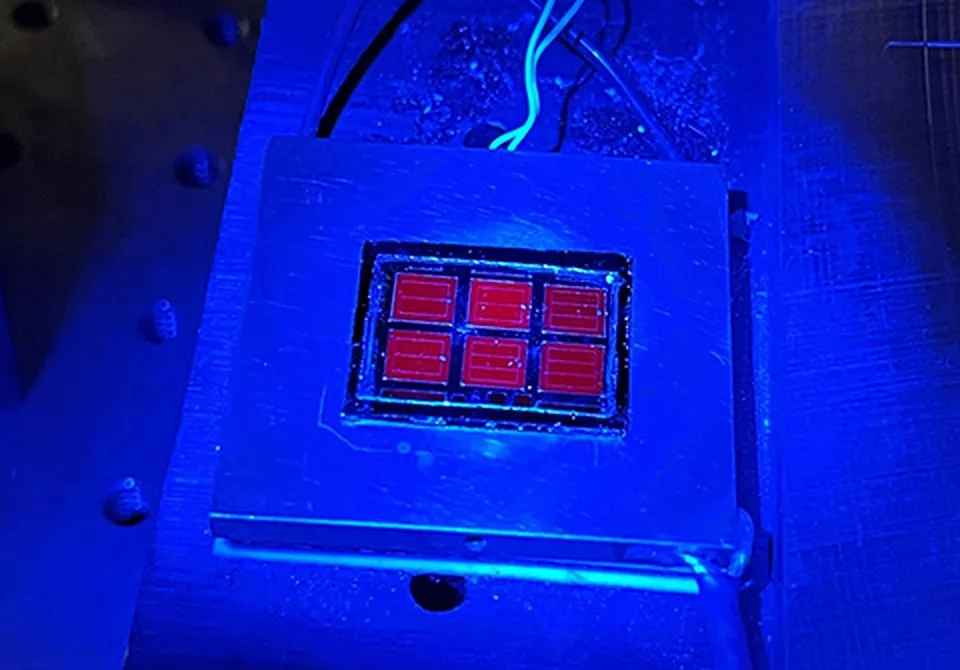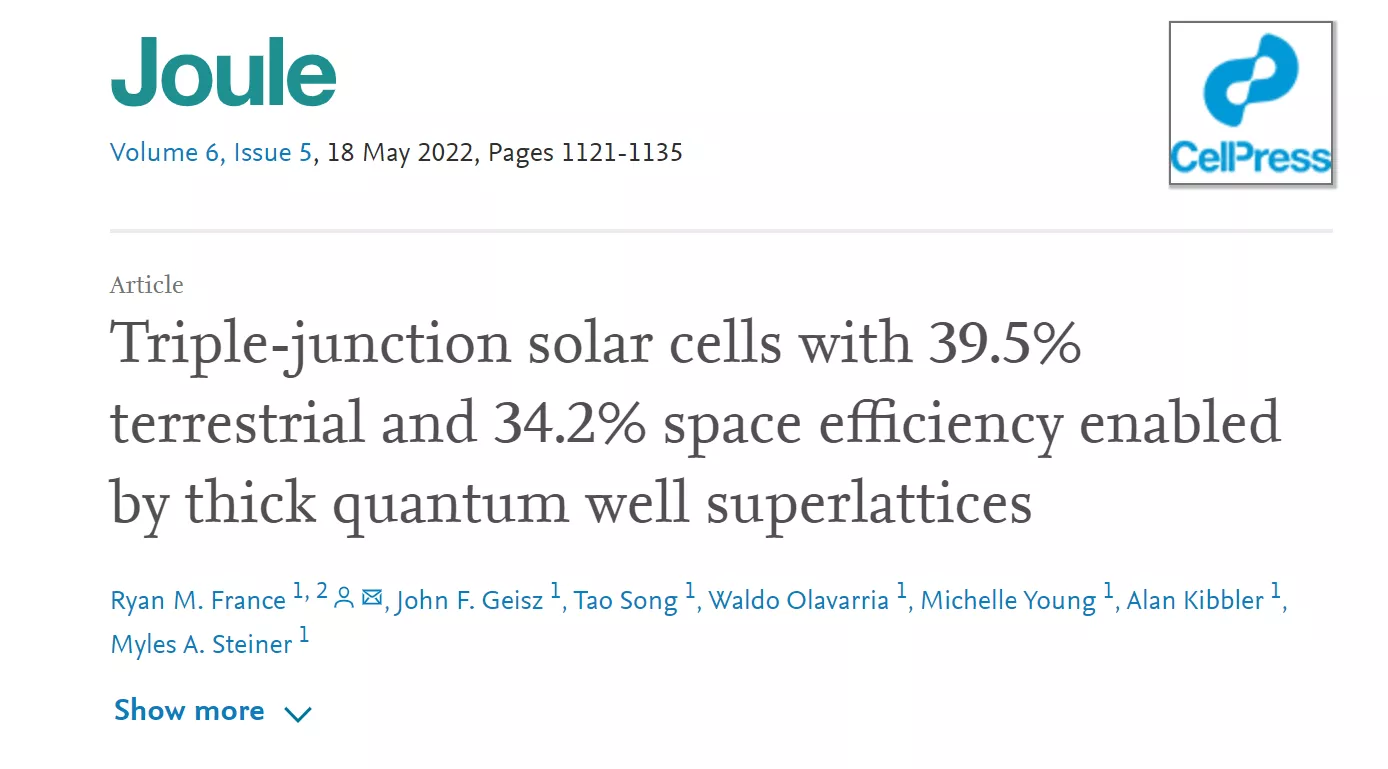American scientists have created a three junction solar cell with an efficiency of 39.5%, setting a world record for any type of cell under single sunlight. Although the materials and processes on which this concept depends are still too expensive for most commercial purposes, it will soon be put into practical use in satellites and other space technologies.
A team of scientists led by the National Renewable Energy Laboratory (NREL) of the U.S. Department of energy set a new world record for the efficiency of solar cells without normal lighting of concentrators. The efficiency of cells based on three-layer III-V materials reached 39.5%.

This new record broke the previous 39.2% record of NREL. Through various innovations, the team was able to greatly simplify the equipment and use three terminals in series instead of the previous six terminals. The previous record of three junction solar cells was 37.9% set by sharp in 2013
A paper recently published in Joule magazine "thick quantum well superlattice enables three junction solar cells to have 39.5% ground efficiency and 34.2% space efficiency" comprehensively describes this kind of cells. The team combined layers of gallium indium arsenic (GaInAs), gallium arsenide (GaAs) and gallium indium arsenide (GaInP) to create a device that can absorb a large amount of solar spectrum.

The key to this approach is NREL's latest "quantum well" work, which allows it to better adjust each layer to absorb different parts of the solar spectrum. Ryan France, senior scientist and battery designer of NREL, said, "although gallium arsenide is an excellent material and is usually used in type III-V multi junction batteries, it does not have the correct band gap as three junction batteries, which means that the photocurrent balance between the three batteries is not the best."
"Here, we modify the band gap while maintaining excellent material quality by using quantum wells, which makes this device and other potential applications possible." He added.
Quantum wells are thin nanostructures inserted into the battery layer, which can change the band gap and other characteristics. Using these, the team was able to increase the band gap of the intermediate GaAs battery layer to maximize its performance consistent with the other two. Although the quantum well phenomenon is not a new discovery, the challenges of using these materials on several nano scales limit their practical benefits in previous studies.
The team acknowledges that, at least for now, the processes and materials they are studying are too complex and expensive for most mainstream solar applications. Although NREL is trying different ways to greatly reduce its cost, at present, power supply for satellites and other space technologies is the only possible application of any type of solar cells based on these "III-V" materials.